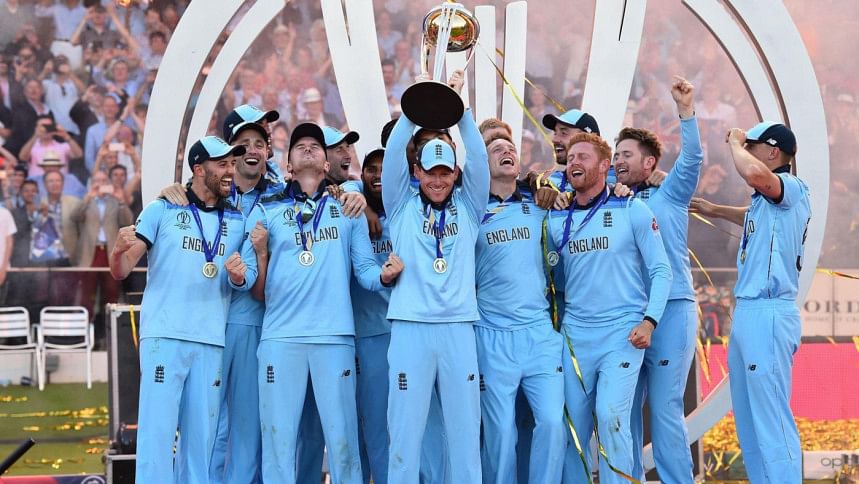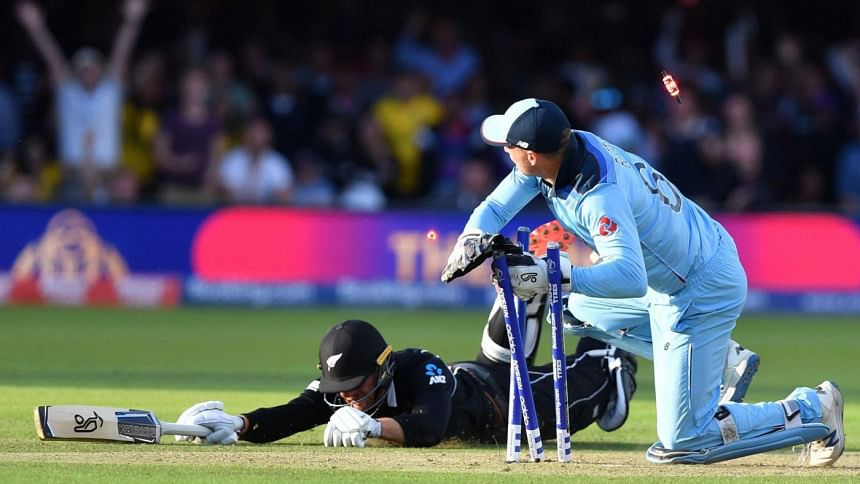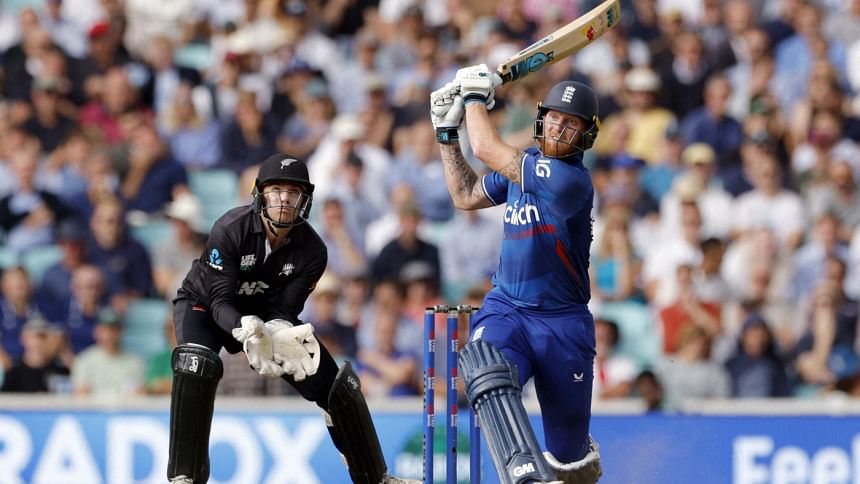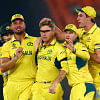A cup that's hard to resist

One by one, the bands are getting back together, ahead of a tournament that matters an awful lot more than the reputation of its format would suggest.
Is 50-over cricket passé? On a day-to-day basis, quite possibly. At a bilateral level, it is feeling the squeeze like no other format – it's not as prestigious and protected as Test cricket, nor as bitesize and lucrative as T20s. And if the global calendar won't offer any leeway for its overburdened players, then it's hardly surprising if they decide -- as England's Ben Stokes did last year - that ODI cricket is the format that has to make way.

And yet, here we are on the eve of the 2023 World Cup, and look who's back in town. Last week, Stokes proved a year's ODI absence had made not a jot of difference to his approach by slamming an England-record 182 against New Zealand at The Oval, an innings in which Trent Boult – another notable returnee to international cricket – picked up five momentum-slowing wickets.
Joe Root and Kane Williamson, two linchpins of their respective teams in 2019, are also set to be airdropped into the England and New Zealand starting XIs, despite next to no game-time in the interim. Likewise, India's Jasprit Bumrah is another world-class player whose comeback from injury has been tailored towards his presence in India's home World Cup campaign.
In short, it's where the best want to be – perhaps the only stage that is of unequivocal interest to every calibre of world-beating players, no matter whether their day-to-day focus comes in the shortest or the longest format. And so for that reason, even while the obituaries for 50-over cricket continue to be written, perhaps the coming month's action will serve as a reminder of just how important it is as a stage on which to play, and to succeed, for your country.

Broadly speaking, there is no denying the direction of travel for the world game. The growth of the T20 circuit is unstoppable, and already – as with football – the sport's true riches are increasingly to be found at club, rather than country level. But as Lionel Messi proved in Qatar last December, true fulfilment as a sportsman still requires that higher level of prestige that only a World Cup can offer.
And that doesn't simply apply to the glory of ultimate victory. The beauty of the 50-over World Cup in particular, over and above the T20 version which has existed only since 2007, is the depth and robustness of its historical roots. Ask any of the nations involved to recall their country's greatest sporting glories, and (with perhaps the notable exception of the endlessly cursed South Africans), World Cup moments would be front and centre of the highlights.
India's World Cup win in 1983 was as transformative as their follow-up win in 2011 was cathartic. Pakistan's in 1992 and Sri Lanka's four years later are unsurpassed as emblems of national pride and togetherness. Australia's numerous wins include the 1987 title that effectively kickstarted their golden era, after perhaps the most fallow decade of their sporting lives. And even England's fans, so obsessed with Test cricket that they forgot to care for ODIs for 30 years, are left breathless by every replay of that final four years ago.
And even for the nations that have yet to experience the ultimate win, can anything surpass the highs of the World Cup stage? Bangladesh's crucial victory over Pakistan at Northampton in 1999 effectively rubber-stamped their subsequent Test status, but their Tamim Iqbal-inspired crushing of India in 2007, and their back-to-back wins over England in 2011 and – most famously – at Adelaide in 2015, surely rank among their mightiest moments.
Likewise, Ireland's win over England in 2011; Zimbabwe's over Australia in 1983; Kenya's improbable march to the 2003 semi-final. Each is installed in a pantheon that owes its prestige to a narrative that has now stretched across 13 World Cup stagings and nearly half a century. We know and rely on the fact that there will be more such moments to come in the coming months. To threaten the status of the 50-over World Cup would be to deal a grotesque historical blow to a sport that is already feeling its moorings shift.
But all's the more reason to believe that the sport will have doubled down on the tournament's sanctity come the final in November. Test cricket has been the vessel for all things historical down the years, but – with the notable exception of the Ashes – it feels as though the format's global relevance has long since been punctured.
It's been 13 years already, for example, since Tamim tore up Lord's and Old Trafford with two blisteringly brilliant centuries on Bangladesh's most recent Test tour of England. And it's been two full decades since their first and last tour of Australia, in the infancy of their Test status in 2003. Despite 1-1 draws against both opponents on home soil in 2016 and 2017, it's futile to pretend that there's any hope of more regular Test encounters in the future.
But as the tempo of Test cricket moves inexorably towards that of white-ball cricket – as epitomised by England's Bazball exploits – it feels as though the 50-over game could become the obvious means for cricket to retain that sense of "ebb and flow", the trait that has long been considered to set Test cricket apart as the ultimate format.
Take England's fightback from 8 for 3 to beat New Zealand at the Ageas Bowl recently, or Stokes' comments after his 182 that "you have way more time than you think" to build a masterpiece in this format. And he should know. England's batting in their fast-forwarded victory at Headingley last summer, in an epic Ashes clash, was sealed in a run-chase that spanned … exactly 50 overs.
That doesn't mean that we'll emerge from this World Cup thinking that 50-over cricket is the best of the three formats. But, as an intermittent means to stretch the narrative and invite the best to be better for longer, in return for a prestige that nothing else in the game can offer, this four-yearly global get-together is surely unsurpassable.
Andrew Miller is the UK Editor of ESPNcricinfo

 For all latest news, follow The Daily Star's Google News channel.
For all latest news, follow The Daily Star's Google News channel. 









Comments